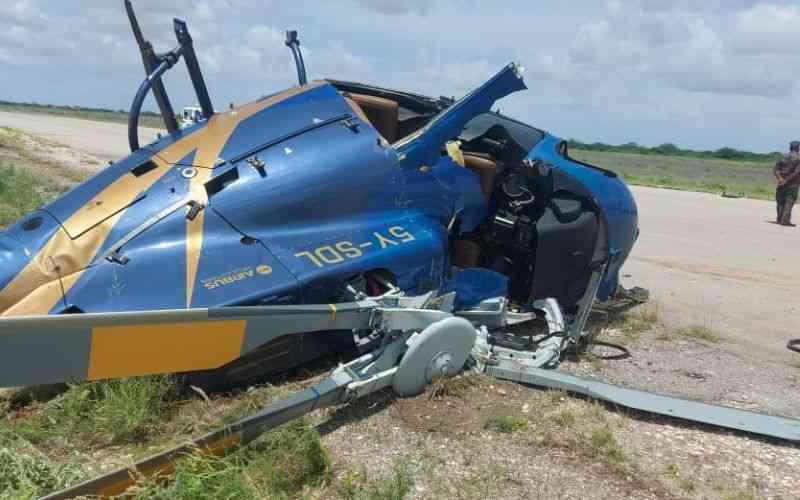Sometimes in May 1953, a British Overseas Airways Corporation (BOAC) plane crashed in Calcutta, India killing all 43 people on board.
When a team of investigators was dispatched to the scene, one member, a young fuel chemist, David Warren was personally touched because there were no survivors or witnesses. Warren’s father, Bass Strait had died in a plane crash in 1934 when the scientist was only nine.
As Warren agonised over what could have caused the accident, his imagination was triggered by realisation that if any of the people on board had been carrying a tape recorder, perhaps it would have survived or given clues of what happened moments before the accident.
When he went home he started designing a flight recorder which could endure jet fuel fire and massive water pressure which earned its name from its mysterious qualities. This device, according to ABC in their website https://www.abc.net.au/ is how a black box was born and named, not because of its colour but because of its mystery.
His intention was to develop a device that could record flight data and cockpit conversations which if retrieved could later help investigators piece together circumstances under which a plane had crashed. He made a prototype which he called ARL Flight Memory Unit. Australia made history by being the first country to make the use of flight data recorder mandatory in all planes in its airspace.
Deliberately chosen
Contrary to common belief, each plane has two black boxes, a flight data recorder and a cockpit voice recorder made of what is commonly referred to as international orange, deliberately chosen because it can be detected from quite a distance.
The flight data recorder stores information on flight control and engine performance while the cockpit voice recorder records background sound and conversations between the pilots and air traffic control.
The flight data recorder and the cockpit Voice recorder cost between $10,000 (about Sh1 million) and $15,000 (Sh1,500,000) per unit respectively.
They have storage capacity of 25 hours but only two hours of cockpit recording are kept. The devices record the conversations in the cockpit but also picks all the background sound s and noise including the plane’s engine
The black boxes are said to be indestructible because they are double wrapped in titanium and stainless steel and are meant to withstand severe conditions.
The box is composed of three layers and the outer a case made of hardened steel or titanium designed to survive intense impact and pressure damage. The second layer is an insulation box while the third is a thermal block to protect it against severe fire and heat.
To test their strength the devices are subjected to impact of 227 kilos and only after it survives a fire which is 1,1000 celcius degrees and then submerged in a pressurized tank with salt water and then dipped in jet fuel.
The black box must be able to withstand an acceleration of 3,400 Gs (3,400 times the force of gravity). The devices must also survive flames up to 2,000 degrees F for one hour while the beacon must emit a signal once per second while submersed in 20,000 feet of saltwater for 30 days.
It is built in such a way that its underwater locator starts sending a pulse once its sensor touches water. They have capacity to operate in a depth of four kilometers and its battery can transmit signals for 30 days. When Air France Flight 447 was involved in an accident on June 1, 2009, killing 228 people, it took two years to retrieve its black boxes from the Atlantic Ocean.
Stay informed. Subscribe to our newsletter
Given that the cockpit voice recorder and the flight data recorder are wrapped in stainless steel boxes roughly 10 inches by 10 inches by 5 if the same design was adopted to make planes, this would make them too heavy to fly.
[Parts of the report have been adapted from US based National Public Radio Inc.]
 The Standard Group Plc is a
multi-media organization with investments in media platforms spanning newspaper
print operations, television, radio broadcasting, digital and online services. The
Standard Group is recognized as a leading multi-media house in Kenya with a key
influence in matters of national and international interest.
The Standard Group Plc is a
multi-media organization with investments in media platforms spanning newspaper
print operations, television, radio broadcasting, digital and online services. The
Standard Group is recognized as a leading multi-media house in Kenya with a key
influence in matters of national and international interest.
 The Standard Group Plc is a
multi-media organization with investments in media platforms spanning newspaper
print operations, television, radio broadcasting, digital and online services. The
Standard Group is recognized as a leading multi-media house in Kenya with a key
influence in matters of national and international interest.
The Standard Group Plc is a
multi-media organization with investments in media platforms spanning newspaper
print operations, television, radio broadcasting, digital and online services. The
Standard Group is recognized as a leading multi-media house in Kenya with a key
influence in matters of national and international interest.







